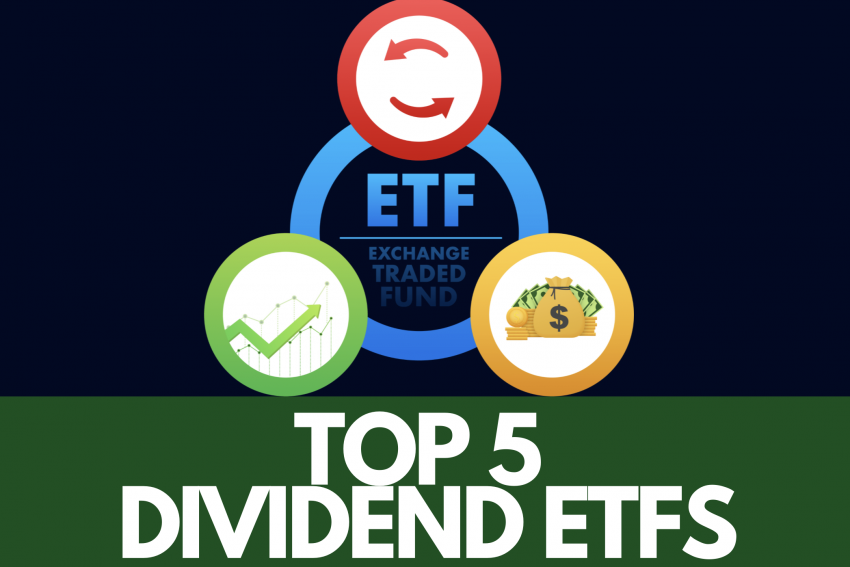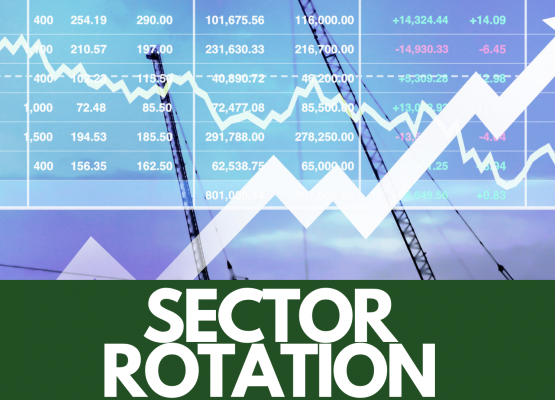Today we will be discussing 5 dividend paying ETFs— The Vanguard Dividend Appreciation ETF (VIG), The iShares Core S&P U.S. Dividend Aristocrats ETF (NOBL), The SPDR S&P 500 Dividend ETF (SDY), The Schwab U.S. Dividend Equity ETF (SCHD), and The JP Morgan Equity Premium Income ETF (JEPQ)—we will dive into each ETF’s strategy, holdings, recent dividend payouts, price, yield, and fees. This analysis will provide a clear picture of their performance, cost-efficiency, and suitability for investors looking for dividend income or growth through diversified exposure to dividend-paying stocks.
Vanguard Dividend Appreciation ETF (VIG)
The Vanguard Dividend Appreciation ETF (VIG) is designed for investors who are seeking to capitalize their long-term growth of dividends. This ETF aims to track the performance of the S&P U.S. Dividend Growers Index, which includes companies that have a history of increasing dividends over time. By holding stocks in the index in approximately the same proportions as their weightings in the index, VIG offers exposure to a diversified portfolio of dividend-growing stocks.
As of the most recent payout and dividend information, VIG currently pays an annual dividend amount of $3.21, which includes a dividend yield of 1.83%, based upon the most recent dividend date, which was paid on December 27, 2023.
This indicates that the ETF pays dividends quarterly to its shareholders. The ETF’s expense ratio is remarkably low at 0.06%, making it a cost-efficient option for investors.
In terms of valuation, VIG currently has a Price/Earnings (P/E) ratio of 21.50, which is lower than the ETF Database Category Average P/E ratio of 15.31 and the FactSet Segment Average P/E ratio of 8.65. This might suggest that VIG’s holdings are valued more conservatively compared to other ETFs in its category.
Although VIG offers a solid dividend growth rate, its yield may lag behind peers such as SCHD. This could be a consideration for investors prioritizing immediate yield over long-term dividend growth.
In comparison to other ETFs and investment options, VIG’s strategy focuses on stable, profitable firms with a track record of consistent dividend increases, which potentially insulates the portfolio against market volatility, and additionally ensures a steady growth trajectory for dividends.
Despite potential challenges, including including lower yields compared to some alternatives, VIG’s emphasis on dividend growth and a low expense ratio make it a compelling option for passive investors who seek a blend of income and growth.
For further details and the most current information, it’s advisable to refer directly to Vanguard’s official materials and reliable financial analysis platforms..
iShares Core S&P U.S. Dividend Aristocrats ETF (NOBL)
The iShares Core S&P U.S. Dividend Aristocrats ETF (NOBL) is tailored for investors who seek exposure to U.S. companies with a robust history of increasing dividends. NOBL exclusively focuses on the S&P 500 Dividend Aristocrats—companies that have not only paid dividends but have also grown them for at least 25 consecutive years, showcasing stable earnings, solid fundamentals, and strong historical performance.
Launched in October 2013, NOBL has demonstrated a commitment to dividend growth, but with mixed performance relative to the broader market.
From November 2013 to October 2023, for example, NOBL delivered an annualized total return of 9.29%. This return is modest compared to some benchmarks like the IVV (which tracks U.S. bellwethers), which highlights the ETF’s focus on less volatile, defensive names, which can lead to lower volatility, and also less competitive price returns.
Despite this, NOBL has offered some protection during market downturns, which comes with reduced maximum drawdowns, and slightly better performance in its worst years compared to more aggressive indices.
NOBL’s dividend strategy is characterized by selecting high-quality stocks that have consistently increased their dividends, emphasizing the fund’s lower volatility, and potential for providing income & growth over time.
However, it’s important to manage expectations regarding dividend growth rates, as double-digit CAGR (Compound Annual Growth Rate) for dividends may not be realistic given mid-single-digit EPS (Earnings Per Share) and EBITDA growth rates for companies within NOBL. The ETF’s expense ratio currently stands at 35 basis points, which is a factor to consider as it can impact total returns.
In comparison to other dividend-focused ETFs, NOBL’s approach is distinct due to its stringent inclusion criteria, focusing on dividend consistency and growth over a significant period.
This strategy aims to offer investors a blend of income, quality, and stability. However, it’s important for investors to consider their own financial objectives, risk tolerance, and the broader market, when evaluating NOBL as part of their investment portfolio.
For the most current and detailed information, including recent dividend payouts, it’s advisable to consult official fund documentation and financial analysis platforms.
SPDR S&P 500 Dividend ETF (SDY)
The SPDR S&P Dividend ETF (SDY) is designed to offer investors exposure to U.S. stocks that have consistently increased their dividends for at least 20 consecutive years. The ETF tracks the performance of the S&P High Yield Dividend Aristocrats Index, focusing on companies that exhibit both dividend growth and sustainability.
As of February 7, 2024, SDY had an asset under management (AUM) of $20.1 billion, with a dividend yield of 3.17% and an annualized forward dividend of $3.91 per share. The fund’s expense ratio stands at 0.35%, and it has a net income ratio of 3.06%, distributing dividends quarterly to its shareholders.
In terms of dividend payouts, SDY paid approximately $3.91 per share over the past year, with the most recent quarterly dividends being $0.97822 in December 2023, $0.7928 in September 2023, $0.81391 in June 2023, and $0.71319 in March 2023.
SDY’s strategy of selecting dividend aristocrats aims to provide a reliable income stream along with potential for capital appreciation, by investing in high-quality companies with a proven track record of dividend growth.
This focus on dividend growth, rather than merely high dividend yields, helps in potentially reducing volatility, along with improving the risk-adjusted returns over time. The ETF’s diversified portfolio across various sectors aligns with its objective of achieving a stable and growing income, which makes it an attractive option for income-focused investors.
For those considering SDY as part of their investment portfolio, it’s essential to review the fund’s current performance, holdings, and how the fund fits within ones broader investment strategy and risk tolerance.
As always, you should conduct your own due diligence, or potentially consult with a financial advisor to ensure that any investment aligns with your financial goals and objectives.
Schwab U.S. Dividend Equity ETF (SCHD)
The Schwab U.S. Dividend Equity ETF (SCHD) is designed to provide investors with exposure to high dividend yielding U.S. stocks that have a record of consistently paying dividends. It aims to track the performance of the Dow Jones U.S. Dividend 100 Index, focusing on companies that exhibit both dividend sustainability and growth potential.
As of February 9, 2024, SCHD has a current dividend yield of 3.87%, with an annualized forward dividend of approximately $2.97 per share. The ETF has a low expense ratio of 0.06%. The most recent dividends per share were $0.7423 in December 2023, $0.6545 in September 2023, $0.6647 in June 2023, and $0.5965 in March 2023.
SCHD’s investment strategy and dividend distribution make it a compelling choice for income-focused investors who seek exposure to high-quality, dividend-paying U.S. stocks.
The ETF’s emphasis on companies with a consistent dividend payment history and financial strength aims to offer a balanced approach to dividend investing, combining income generation with the potential for capital appreciation.
For more detailed analysis and updates on SCHD, investors are encouraged to review Schwab’s ETF materials, along with financial platforms such as Nasdaq.com and Dividend.com.
JP Morgan Equity Premium Income ETF (JEPQ)
The JP Morgan Equity Premium Income ETF (JEPQ) is designed to provide investors with current income while maintaining the potential for capital appreciation. It achieves this by creating an actively managed portfolio of equity securities and through the selling of call options.
As of writing this, JEPQ has a current dividend yield of 7.81%, and has paid an annual dividend of $4.10 per share. The dividends are distributed monthly, with the most recent ex-dividend date being February 1, 2024. Additionally, JEPQ’s expense ratio of 0.35%.
JEPQ’s strategy involves investing significantly in the equity securities of companies included in its primary benchmark, the Nasdaq-100 Index®, while also engaging in the sale of equity-linked notes (ELNs) and call options to generate income. This approach aims to capture a majority of the returns associated with its benchmark, with potentially lower volatility and providing regular, monthly income.
For those interested in a monthly income-focused ETF that also includes prospects for capital growth, JEPQ presents a compelling option, especially given its monthly dividend payout frequency, and its focus on technology & large-cap stocks, which are significant components of the Nasdaq-100 Index. However, you should always consider the fund’s strategy, performance, and the potential risks involved with options trading before making any investment decision.
Summary and Analysis
When comparing these five ETFs, you should always consider your own income needs, growth expectations, and risk tolerance.
VIG and NOBL are excellent choices for those seeking dividend growth, while SDY and SCHD offer higher yields for income-focused investors. JEPQ, on the other hand, provides a unique approach by combining dividends with income from options, potentially offering higher income but with a different risk & volatility profile.
Investors should also consider fees, as they can significantly impact long-term returns. VIG, NOBL, and SCHD stand out for their low expense ratios, while JEPQ, with its slightly higher fee, compensates with a potentially higher paying income strategy (in terms of yield).
In conclusion, these ETFs offer a range of options for investors looking to diversify their income sources through dividend-paying stocks. By carefully selecting among these exchange traded funds, investors can find the right balance between growth, income, and risk that meets their investment objectives.




